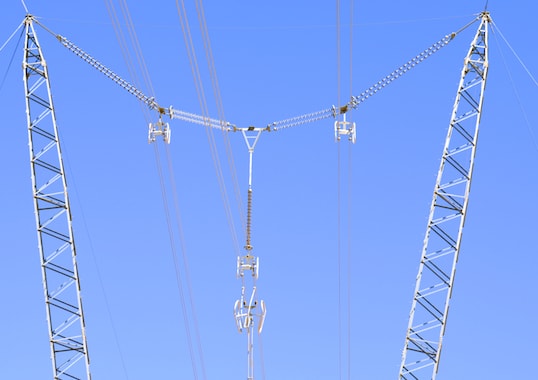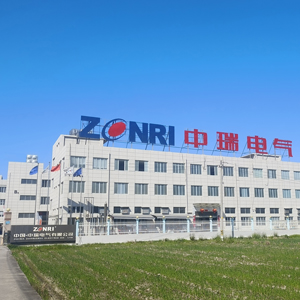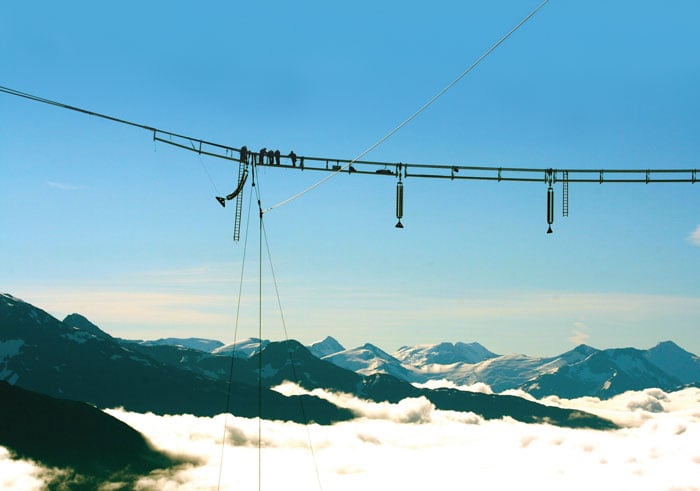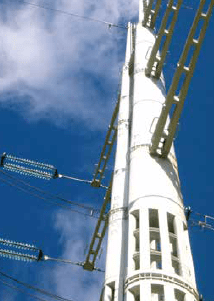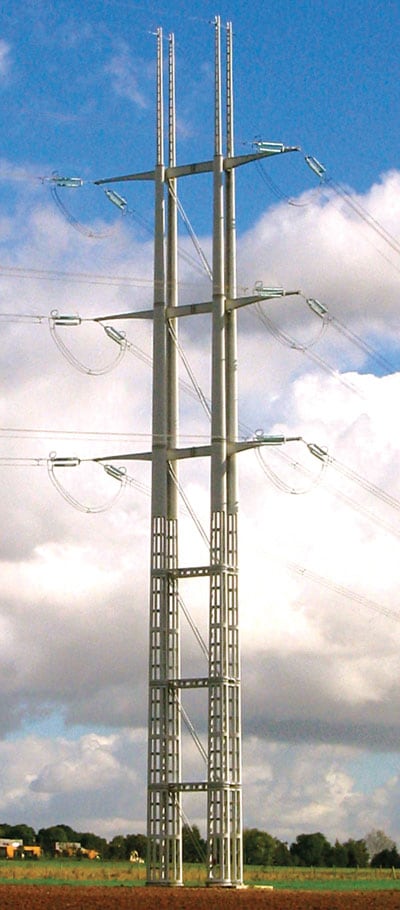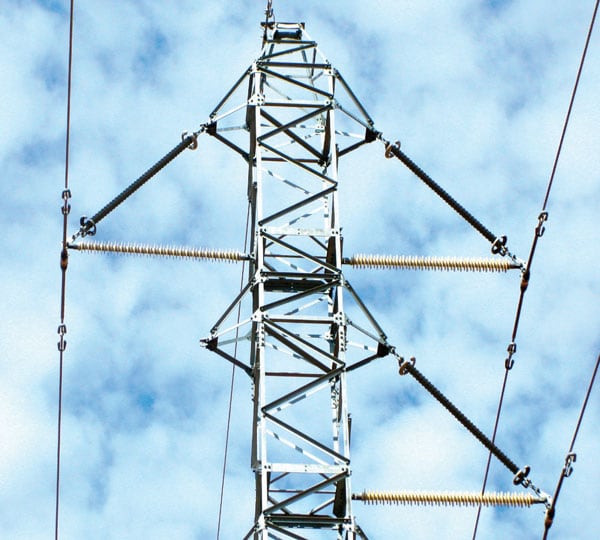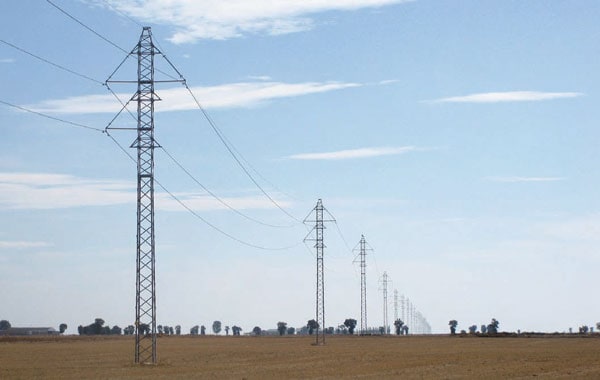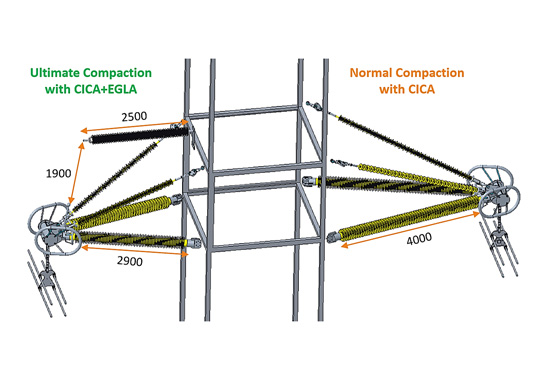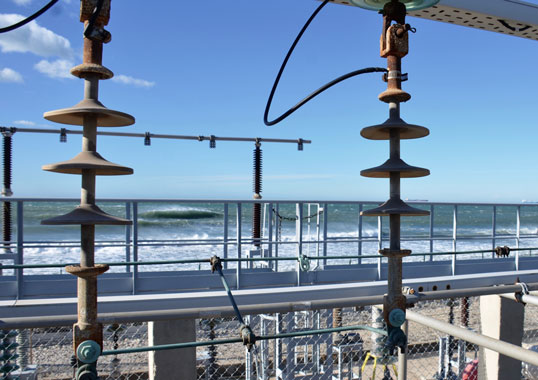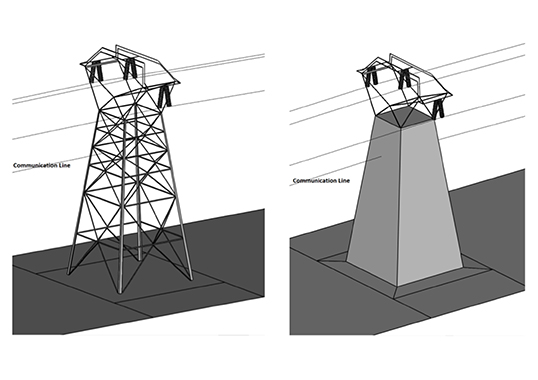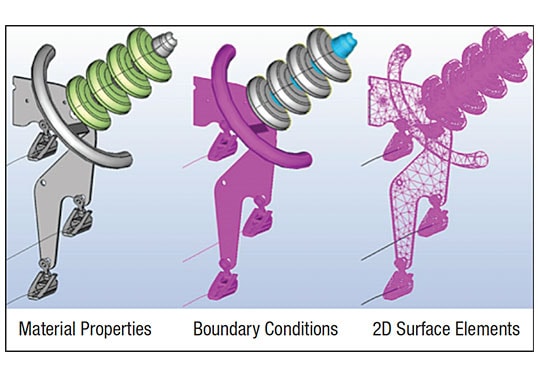Over 26 years, INMR has visited and reported on hundreds of transmission structures throughout the world – crossing deserts, rain forests, urban areas, towering mountains and other diverse landscapes. While the majority of these have involved fairly conventional lattice type towers, others have stood out due to their high aesthetics, unusual functionality or unique design – in some cases all three combined.
INMR.com tours some of the world’s remarkable transmission structures.
Following destruction by avalanche of towers on two 300 kV circuits in the coastal mountains of British Columbia, Canada during the winter of 1954-55, an engineer named Brian White proposed the concept of catenaries on which phase conductors would be supported. Several years ago, another engineer, Peter Catchpole, utilized the same concept for that double circuit line, one span away and for much the same reason.
There are now two such ‘catenaries’ in a row on that line, both utilizing cables (circa 1160 m long for that from 1955 and about 1220 m for that built in 2008). The catenaries permit a span for the two circuit’s six very large conductors (3,364 kcmils) of circa 2450 m from one pair of standard lattice towers to the next. In other words, over an area of some 1250 x 2500 m across an avalanche prone valley, there are no towers at all. The vertical design load on each suspension insulator string is 75 tons/ phase due to heavy ice accumulation. Access for inspection and maintenance is by helicopter pads mounted on the cables and about 150 m above ground.
Tower in Shenzhen Designed for 4 Circuits
Carrying four 220 kV circuits might normally require rather tall towers. However, engineers in China designed a structure that accomplishes this with lower height. The line, which is probably unique in the world, utilizes composite insulators in suspension and glass strings in tension, passes a rapidly developing area near the Baoan Airport, just outside of Shenzhen.
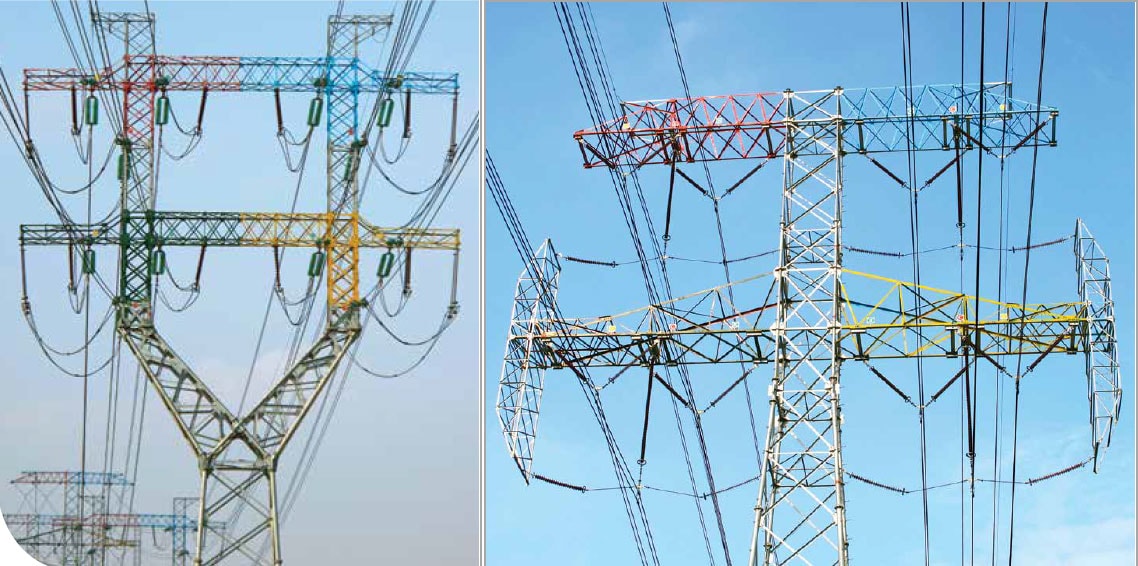
Stately Towers Influenced by Maritime History
A transmission line running through northwestern France evokes the region’s maritime tradition through the use of imposing structures that mimic masts of sailing ships. These tall, elegant towers were reportedly many times more expensive than conventional lattice type alternatives however design, not cost, was apparently the key consideration for RTE, the French grid operator.
Use of such special designs is still relatively new in overhead transmission but is expected only to grow as appearance of lines becomes key to the process of obtaining required public approvals.
Towers Are Eye-Catching Feature Near Highway
Anyone driving from the center of the Chinese city of Jinan to its airport will pass and almost surely notice elegant 220 kV cable transition towers located only meters from the highway. Many such towers see the bulky terminations mounted in an elevated position on the structure, giving it an unwieldy top-heavy appearance. Moreover, the cables, being much thicker than the overhead conductors, add even more unsightly mass from a visual perspective. In this case, designers have dropped the overhead conductor to ground level terminations in an unusual and elegant fashion using a series of angled supports. The overall effect is to turn what might have been a bulky eyesore into what can best be described as a modernistic metallic sculpture.
Futuristic Cable Tower in Korea is One of a Kind
Daejeon, one of the largest cities in South Korea, has been promoting itself as the epicenter of the country’s cutting-edge science sector. With this in mind, engineers at Korea Electric Power Corp. attempted to contribute to this image by designing a one-of-a-kind cable transition tower situated at a busy highway interchange. While relying on conventional insulators, the structure is anything but conventional, leaving the impression of atomic physics.
Tower Developed Based on Capabilities of Composite Insulators & Arresters
The rapid development of hollow core composite insulators as well as polymeric housed surge arresters starting in the early 1990s together provided the impetus behind this innovative 400 kV tower, developed and tested by engineers at Sweden’s STRI. The goal was to utilize the high mechanical strength of the FRP tube in the insulator and the lightweight arrester to ‘de-clutter’ the typical HV line, substituting only four key components for what might otherwise be lengthy insulator strings as well as overhead ground wire. The concept, perhaps inspired by the Trident configuration used on distribution lines in places such as the United Kingdom, excels from the standpoint of efficiency but apparently has so far found only very limited application in Norway due to its comparatively high cost and ‘top heavy’ appearance.

CLICK TO ENLARGE

Bold Towers Provide the Real Aesthetics Along Sensitive 735 kV Line
The Canadian province of Québec was especially hard hit by the great ice storm of January 1998, losing hundreds of transmission towers and seeing one region southeast of Montreal left without power for weeks. In order to strengthen the grid supplying the region against similar events, engineers at Hydro-Québec sought permission to construct a new 735 kV line that would run along one of the city’s most traveled highways. Public opposition was high and, in order to obtain required approvals and meet the demands of local farmers, key considerations were high aesthetics and small footprint. The striking tubular portal suspension towers one finds along a line section near a scenic river crossing were originally the prototype for the entire line. However, due to higher cost and longer lead-time to procure materials, lattice type towers of similar portal design concept ended up being specified to dominate the line.

CLICK TO ENLARGE
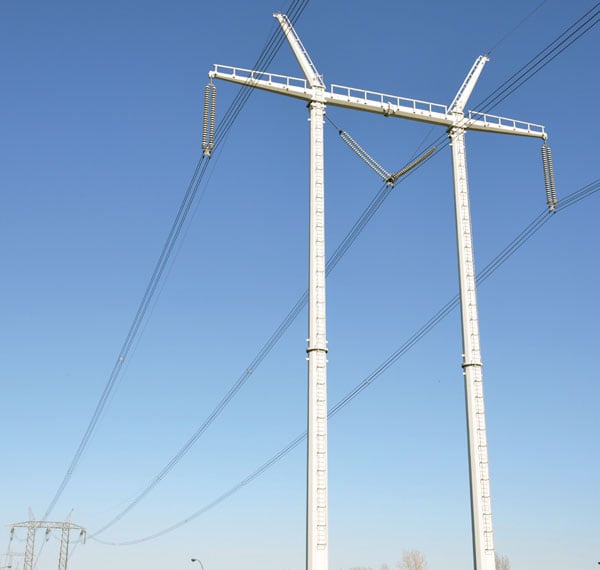
Line Designed for Minimalism Yet Accomplishes Much
The Wintrack transmission line design now being used by Dutch grid operator TenneT (see INMR Issue 99, Q1, 2013) is a bold departure from lattice structures of the past. Sleek, with a highly modernistic appearance, Wintrack is perhaps the role model for the future of power transmission in crowded Europe. In this respect, perhaps it’s only fitting that it was developed in that continent’s most densely populated country. But stunning appearance is far from the only advantage, with the added benefit of significantly reduced line corridors due to lower magnetic fields from the line’s conductor configuration. Structural steel and foundation costs tend to increase as footing dimensions of a transmission structure decrease. Therefore, one of the goals for TenneT engineers was finding the optimal balance between a comparatively small footing, to satisfy the criterion of minimalism, and reasonable material and construction costs.
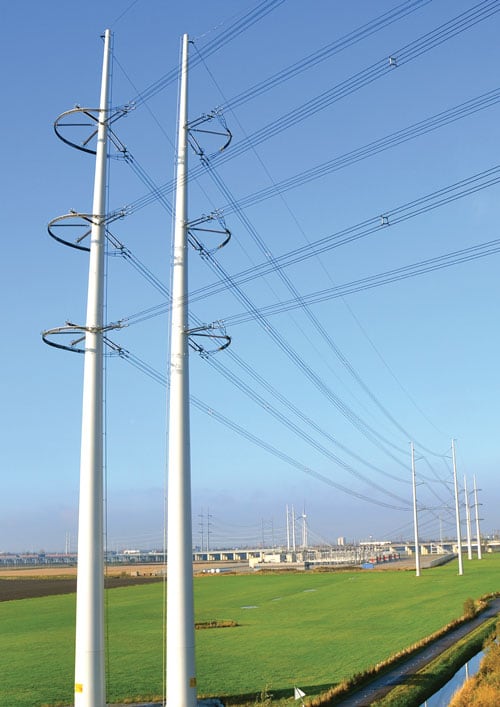
Towers Designed to Surround Line
One of the interesting design variants available to Chinese power engineers is a tower type that encloses the phase conductors of EHV lines. In this case, on a line running near the new EPRI UHV Test Facility near Beijing, a unique arrangement of V-string composite insulators supports 18 sub-conductors
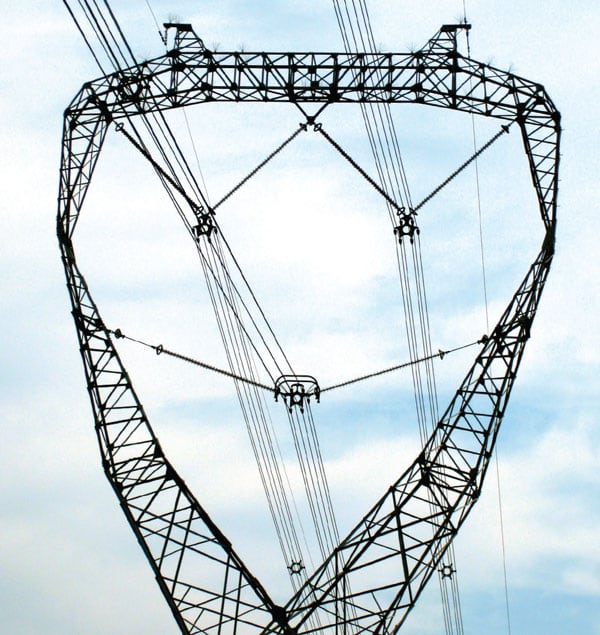
Line Design Shines for Simplicity and Low Impact
The 220 kV Mudarra-La Olma line, running through a section of mainly agricultural land near the Spanish city of Vallodolid, was one of the first projects by the country’s grid operator, Red Eléctrica de España, that utilizes horizontal Vee assemblies of composite insulators. Utilizing only one conductor per phase, the towers on this line were designed to one day accommodate two circuits.
What makes this tower design remarkable is its simplicity and unusually low visual impact, even though running through flat agricultural terrain.

